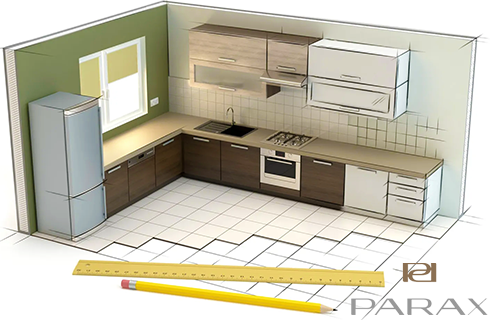What tools do we need to measure the kitchen?
• Paper
• Tape meter
• Pencil or pen
How to measure the kitchen?
What is important before measuring cabinets is to determine their exact location in the kitchen space. To determine the location of cabinets, it is necessary to consider the size of the refrigerator, dining table, place of travel and, most importantly, the size of the kitchen. Do not forget to first specify the location of doors and windows, refrigerator, hood, washing machine, dishwasher and sink. Then determine the distance between the faucet and the location of the sewer pipe from the floor and one of the corners.
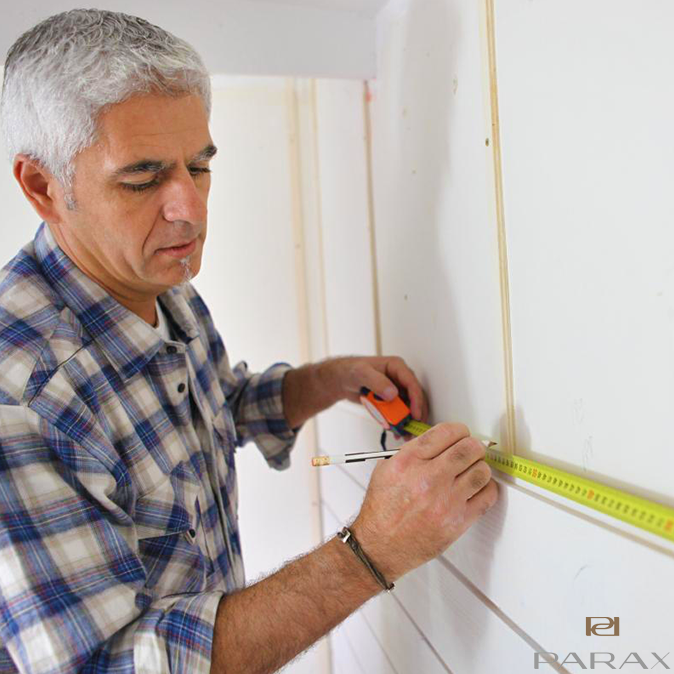
Step 1: Draw a floor plan
Start by drawing the floor plan (view from above) and take the first step correctly. A pencil or pen is enough to put your kitchen design on paper.
Note: Before drawing a floor plan, identify the following locations:
• Windows
•the doors
•Water lines
• Gas lines
• Drainage lines (sewage)
• Valves for heating and air
• Hood valves
• Power outlets
There is no need to think about scale in the original design. Just do your best to draw the design as accurately as possible. Draw lines on the walls on paper. But pay attention to the point that the boundary of the kitchen floor shows the crease point and the location of the walls with a continuous line.
Step 2: Measure the kitchen floor
It’s time to measure the kitchen floor. You must know and have seen that the floors of all houses are not the same! For this reason, in order to draw the plan and determine the dimensions, it is necessary to examine details such as recesses, protrusions and defects of the kitchen floor. Measure these details with a meter and write them down.
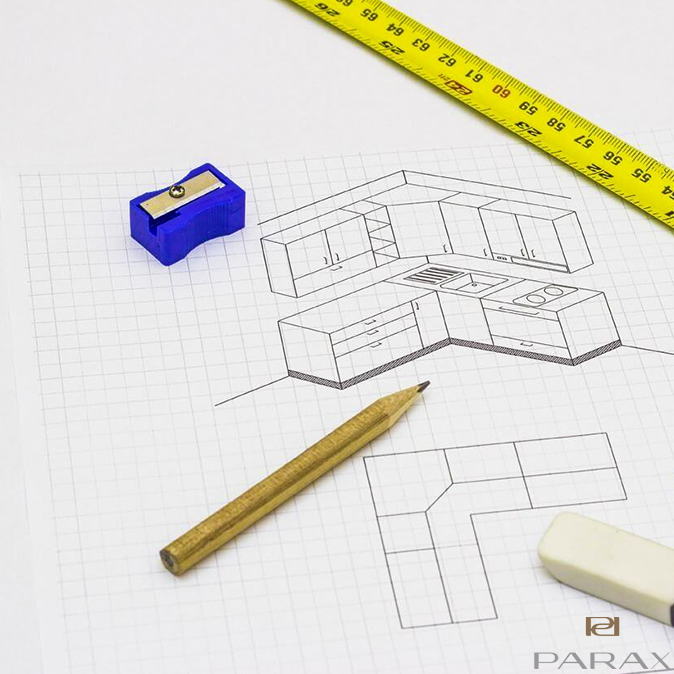
Step 3: Determine the height of the floor
It’s time to calculate the indentation, protrusion and convexity of the floor below the window location. Now calculate its length and width with a corner and then write down its height.
Step 4: Assign the location of the appliances
Now we have to go to those appliances that you plan to put in the kitchen after installing the cabinets. Do not forget to write the location of the gas pipe, water and sewage, the location of the electrical outlet and.. Pay special attention to obstructions. Failure to pay attention to these obstructions will negatively affect the location of the cabinet.
Step 5: Take horizontal kitchen measurement
Remove the decor and layout and start measuring your space. Take a horizontal measurement from one of the adjacent corners of the wall. Move from edge to edge with a tape measure. After measuring large walls, move to smaller sections. Now it’s time for the little walls. To measure small sections, go from one outer edge to the next outer cutting edge. Do not miss the smallest decorations. Mention the longitudinal and partial measurements in full on the map you are drawing.
Step 6: Go for vertical kitchen measurement
Once the horizontal kitchen measurement s are completed, it is time to do the same for the vertical measurements. In the initial measurement, measure from the floor to the bottom edge of the window. In the next step, measure from the bottom edge to the top of the window and finally, from the top of the window to the ceiling. The last step is to measure from floor to ceiling. Since some houses in a room have different ceiling heights, you should do at least three different sizes from floor to ceiling.
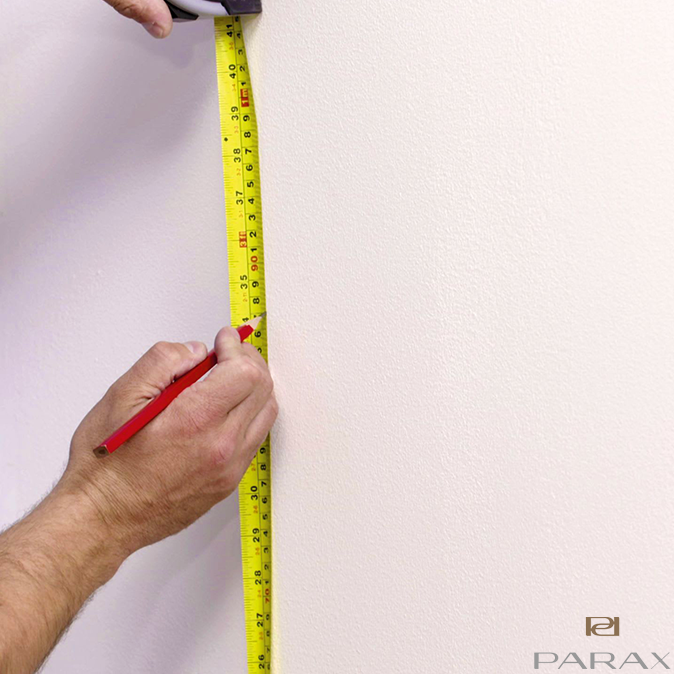
Step 7: Pay attention to the obstacles
When recording sizes, pay special attention to the obstacles that can be seen on the wall, such as vents, pipes and radiators.
Step 8: Decide on the location of the appliances!
Determine first which devices you want to keep after installing the cabinet. Deciding where to place power supplies, water sources, air vents, light switches, and electrical outlets will help you figure out where you can and should not place your cabinets. Do not forget to mark the location of these installations and appliances in your floor plan, in addition to marking their central points. The central point of a device is the point from which the gas or pipeline pipeline starts.
Step 9: Discovering Your Purpose It’s time to dump her and move on.
After completing the kitchen measurement process, plan which cabinets you want to place in which kitchen areas, taking into account the space. Imagine what your kitchen will look like with the new cabinets!
Step 10: Choose your favorite kitchen cabinets
At this stage, you need to decide what style of cabinet and what material is suitable for your kitchen. Of course, there are many options, but only with the right choice can you own a stunning kitchen. Do not forget to make sure of the sizes you have written down before ordering the cabinets.
Do not ignore these points easily!
• Your kitchen measurement should be in centimeters. For example, instead of recording the length of a wall as one meter, you should note its size as one hundred centimeters. You must be aware that high accuracy is the most important measurement criterion! That’s why we say write the dimensions in centimeters. In this way, the dimensions are more accurate and finally the cabinet is made more principled.
• Measure the horizontal dimensions of the kitchen walls at the same height and at the same distance from the floor.
• Accurate measurements are not possible without the use of appropriate tools. Provide a reliable meter to assist you in this process. In addition, use paper and a ruler to help you draw the floor plan that best reflects your kitchen.
Measuring clockwise: The best exercise to make sure we do not miss or forget a wall is to measure the walls clockwise. As you move around the room, you need to label the walls, doors and windows with numbers so that everything is as accurate as possible.
• When measuring windows or doors, keep in mind that the cover is part of the window or door. For example, you can measure a window from one end to the other to get the length or height of the window.
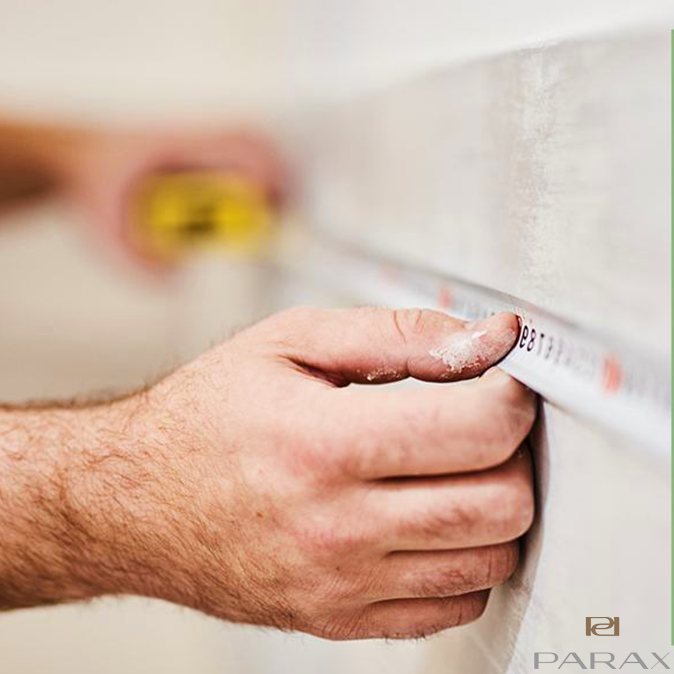
The last word:
Now that you know how to measure cabinets, you are ready to give new life to your kitchen. Click on Parax products to choose a unique cabinet. The variety of Parax products allows you to choose a cabinet that suits your kitchen size and taste. Functional and at the same time decorative is one of the mesmerizing features of Parax kitchen cabinets. You dear ones can visit our permanent and free exhibition to see the showroom and benefit from the advice of our experts.

